Montag, Mai 29, 2006


track listing:
1. Santa Cruz (premaster Eq) 2:24
2. Jah, Mundo, Demonio Y Carne (premaster Eq) 3:21
3. Mare De Deus 4:06
4. Absenta 1:43
5. Las Goteras De Tu Mente (Bangkok) 2:24
6. Nadando Hasta El Faro 1:53
7. Autopista De Opalo 2:38
8. Marea Baja 2:28
9. Flotando 2:49
This is a private Ep from my friend Federico from Argentina. Very much eastern influence on it as well as a superb spanish guitar, amazing percussion and psychedelicious effects in the background. Standout tracks are Mare De Deus and Flotando. Highly recommended! Thank you very much for this awesome album, Federico!:-)
download link
pw: timospsychedelicious


track listing:
1. Jumpin' Jack Flash 3:35
2. Snow Flower 2:49
3. Light My Fire 3:32
4. Mamata (Affection) 3:09
5. Metamorphosis 6:50
6. Sagar (The Ocean) 13:16
7. Dance Indra 3:53
8. Raghupati 3:28
Born in Almora in Uttar Pradesh state in the Himalayan foothills in the north of India, Shankar was the son of Amala and Uday Shankar, popular dancers, and also the nephew of renowned sitarist Pandit Ravi Shankar. Ananda did not learn sitar from his uncle but studied instead with Lalmani Mishra in Varanasi.
In the late 1960s Shankar travelled to Los Angeles, where he played with many contemporary musicians including Jimi Hendrix. There he was signed to Reprise Records and released his first self-titled album in 1970, featuring original Indian classical material alongside sitar-based cover versions of popular hits such as The Rolling Stones' Jumpin' Jack Flash and The Doors' Light My Fire. This album has become an enduring cult classic.

Returning to India in the early 1970s Shankar continued to experiment musically and released in 1975 what was his most critically acclaimed album, Ananda Shankar And His Music, a jazz-funk mix of Eastern sitar, Western rock guitar, tabla and mridangam, drums and Moog synthesizers. Out of print for many years, Ananda Shankar And His Music was re-released on CD in 2005.

After working in India during the late 1970s and 1980s, Shankar's profile in the West began to rise again in the mid-1990s as his music found its way into club DJ sets, particularly in London. His music was brought to a wider audience with the release of Blue Note Records' popular 1996 rare groove compilation album, Blue Juice Vol. 1., featuring the two standout tracks from Ananda Shankar And His Music, Dancing Drums and Streets Of Calcutta.
In the late 1990s Shankar worked and toured in the United Kingdom with London DJ State Of Bengal and others, a collaboration that would result in the Walking On album, featuring Shankar's trademark sitar soundscapes mixed with breakbeat and hip hop. Walking On was released in 2000 after Shankar's sudden death from heart failure the year before.
This is a piece of absolutely essential sitar psychedelia! If you miss to grab this album, it's your fault. That's Ace psych from India, unprecedented! Top notch! One of my favourite psych albums of all time! I would like to thank my friend Indra for this one! See you soon, Timo :-)
download link
pw:timospsychedelicious
Sonntag, Mai 28, 2006
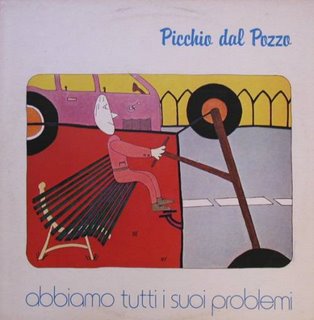
Track listing:
1. La Sgargianza parte 1 (0:49)
2. I Problemi Di Ferdinando P. (7:22)
3. La Sgargianza parte 2 (0:51)
4. Moderno Ballabile (9:50)
5. La Sgargianza parte 3 e 4 (1:33)
6. Strativari (5:49)
7. Mettiamo Il Caso (15:46)
8. Uccellin Del Bosco (3:15)
Total Time: 45:05
Line-up:
- Andrea Beccari / bass, recorder, percussion, voice
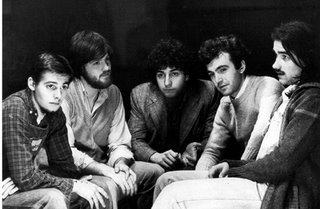
- Aldo De Scalzi / keyboards, saxophone, guitar, voice
- Paolo Griguolo / guitar, recorder
- Aldo Di Marco / drums, vibraphone, organ
- Roberto Bologna / sound technic
- Roberto Romani / saxophone, flute, clarinet
Biography:
Picchio dal Pozzo was one of the very few progressive bands inspired by the English ”Canterbury” school to have emerged from Italy’s fertile progressive musical scene. Active throughout the 1970s, the legendary band only released two albums at the time, both highly regarded and in demand. The release now of Camere Zimmer Rooms, a previously unknown [unheard] studio recording of unreleased compositions, greatly extends Picchio dal Pozzo’s musical legacy.
Setting out to create and enjoy themselves, utilizing various forms of sophisticated music and turning them on their ear, Picchio da Pozzo formed in Genoa in 1972. Its name, Picchio dal Pozzo, which roughly translates as "The Woodpecker Of The Well", derived from a ‘nonsense poem’ written by the band's first sax player, Giorgio Karaghiosoff. The poem appeared on a track on the band's first, self-titled album, released by the Italian Grog label in 1975. At the time, the band was a studio-only entity, a quartet consisting of Aldo De Scalzi (keyboards and voice), Giorgio Karaghiosoff (sax and flute), Andrea Beccari (bass), and Paolo Griguolo (guitar).

Wanting to become a live ensemble, the band recruited additional musicians to join or augment the group, including Claudio Lugo (sax), Aldo Di Marco (drums), Roberto Romani (sax and Francesco Tregrossi (guitar). It also collaborated with Demetrio Stratos, well-known vocalist for the popular Italian progressive band, Area. Concerned with social and political issues in Italy, Picchio dal Pozzo became actively involved in various social causes. The band split its activity between giving live concerts and helping with music education in Italian schools. Between 1975 and 1979, it regularly gave live performances for patients in Genoa’s main psychiatric hospital. In 1980, Picchio dal Pozzo recorded its second LP, Abbiamo Tutti i Suoi Problemi, released by L’Orkestra. Shortly after this record was released, the band dissolved.
4.50 stars out of 7 ratings (progarchives). Highly recommended!!! Not only for Prog lovers but also for psychheads! Enjoy, you will, for sure! :-) Timo
download link
pw: timospsychedelicious
Freitag, Mai 26, 2006
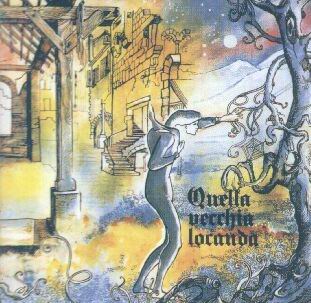
Track listing:
1. Prologo (4:59)
2. Un Villaggio,Un'illsione (3:54)
3. Realta (4:13)
4. Immagini Sfuocate (2:59)
5. Il Cieco (4:11)
6. Dialogo (3:41)
7. Verso La Locanda (5:15)
8. Sogno, Risveglio E... (5:15)
Line-up:
- Massimo Roselli / piano, organ, Mellotron, Moog, electric sitar, cembalo, vocals
- Giorgio Giorgi / lead vocals, flute, piccolo
- Patrik Traina / drums
- Romualdo Coletta / bass, frequency generator
- Raimondo Maria Cocco / electric & acoustic & 12 string guitars, vocals
- Donald Lax / electric & acoustic violin
Review (Progarchives):
he first release from QUELLA VECCHIA LOCANDA and in my opinion one of the all time Italian prog greats. This excellent debut album has a strong PFM-like attitude with
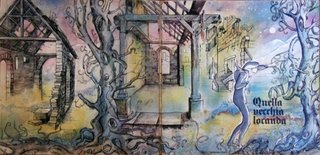 loads of violin and classical themes. Songs are delicate and exceptionally well performed with warm precision. Imagine great 70's sounding keyboard work layered with flute, violin and great guitar work and you have got QVL. As you listen to this album four toes will be tapping and you hands will be moving as this music captivates your motor reflexes. QVL draw on some pretty heavy classical interludes to build their music on. Along the way we are treated to many thematic mood swings and tempo changes. This album has many standout tracks which combine the classical underground 70's Italian sound with a solid blend of tranquility and beauty. Vocals are very expressive and are full of harmonic textures.
loads of violin and classical themes. Songs are delicate and exceptionally well performed with warm precision. Imagine great 70's sounding keyboard work layered with flute, violin and great guitar work and you have got QVL. As you listen to this album four toes will be tapping and you hands will be moving as this music captivates your motor reflexes. QVL draw on some pretty heavy classical interludes to build their music on. Along the way we are treated to many thematic mood swings and tempo changes. This album has many standout tracks which combine the classical underground 70's Italian sound with a solid blend of tranquility and beauty. Vocals are very expressive and are full of harmonic textures.Includes the full cover of their second album, in the style as you can see above. Brill artwork!
Super album! Hope you like those two, I do.
download link
pw: timospsychedelicious

Track listing:
1. Villa Doria Pamphili (5:27)
2. A Forma Di (4:07)
3. Il Tempo Della Gioia (6:15)
4. Un Giorno, un Amico (9:39)
5. È Accaduto una Notte (8:16)
Line-up:
- Claudio Gilice / violin
- Giorgio Giorgi / vocals, flute, piccolo
- Massima Giorgi / bass, contrabass, vocals
- Massimo Roselli / vocals, keyboards
- Patrick Fraina / vocals, drums
- Raimondo Cocco / vocals, clarinet, guitar
QUELLA VECCHIA LOCANDA is a great Italian prog band of the historic scene, formed in Rome in the early seventies. QVL plays a complex music with a lot of instrumental combinations, beautiful melodies and a very high sophistication. Close to KING CRIMSON.
QVL released two albums which are both considered essential releases from that particular scene. The first album is still regarded as a classic in its field, with an original fusion of classical influences and the use of flute and electric violin in evidence. QVL was fairly typical of the style, especially on their second album, "Il Tempo Della Goia", which ranks as one of the finest examples of classical, pastoral Italian symphonic along the lines of PFM, CELESTE, ALUSA FALLAX or LOCANDA DELLE FATE. The group sadly disbanded soon after the second album, leaving us with two more italian progressive gems, both with beautiful covers. Two of the most looked records of Italy!!! Source: Progarchives
Even Psychheads will love this band, absolutely totally highly recommended :-)!!!
No matter what album you listen to, they are both utterly amazing! Progarchives says 4.29 out of 35 ratings. Front and Back Cover together will be on the other album i am gonna post next!!!
download link
pw: timospsychedelicious
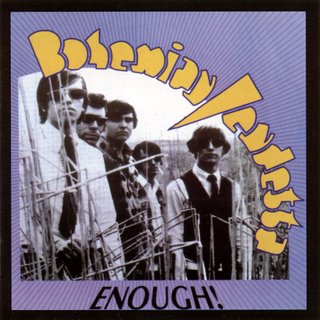 Track Listing:
Track Listing:
1. Like Stoned
2. Irresistible
3. All Kinds Of Lows & All Kinds Of Highs
4. I Don't Go Away
5. How Does It Feel
6. Enough
7. Half The Time
8. I Wanna Touch Your Hart
9. Images
10. Charity Killjoy
11. House Of The Rising Sun
12. Riddles And Fairytales
13. Pleasure
14. All Kinds Of Highs
15. Satisfaction
16. Paradox City
17. Love Can Make Your Mind Go Wild
18. House Of The Rising Sun
19. Images
20. Deaf Dumb & Blind
21. I Wanna Touch Your Hart
22. Riddles & Fairytales - (45 version)
They started life as The Bohemians with the line up as follows: Arthur Muglia(aka Brian Cooke), vocals/organ; Victor Muglia, bass; Randy Pollock, rhythm guitar; Richie Sorrento, drums; Richard Martinez, lead guitar. The name was changed in '66 around the time they recorded their first demo, Like Stoned/Irresistible.
Richard Martinez left to join The Cats Meow (who had a few singles on Decca) and Richie Sorrentino quit. They were replaced by Chuck Monica(drums) and Nick Manzi (guitar) from The Rustics. Three songs were recorded at Ultra-Sonic Studios on Long Island around the fall of '66: How Does It Feel, Enough, Half the Time.
In '67 United Artists released Enough and it got a spot on Dick Clarks 'Rate a Record'. Also in '67, they recorded demos and played various gigs at places like the Action House with bands like The Vagrants and Vanilla Fudge.
They recorded an album for Mainstream in early '68 which took almost a year to be released and got no help from the label.
While waiting for the release of the album, they worked on Faine Jade's Introspection Lp. About this time they called it quits.
Distortion Records recently released a nifty little album called Enough!. This great package includes the demo versions, unreleased acetates, and their recordings as the Bohemians.
Yes, standout tracks en masse imo. Starts with Like Stoned which is a wonderful track as well as she always gives me pleasure which is a sorta realistic depressive superrock ;-) (lot of emotions in it...). Not to forget Enough, also a very nice track, but it is not different with other tracks...just a helluva collection. Highly recommended!!!
Bitrate 256 kb/s; front and back cover included; Size: 128mb; Genre: 60s Garage Psychedelia
download link part 1
download link part 2
pw: timospsychedelicious
Bohemian Vendetta - Enough (excellent garage psych) and Bokaj Retsiem - 1968 - Psychedelic Underground (Psych Prog Krautrock Weirdness) will be posted next. Hope you're gonna like those two.
Lisa, "mc creatrix (1994 before the split) by the Shiny Gnomes is not complete. I am missing tracks 11 and 12, only got tracks 1 to 10. I don't know whether those two are bonus tracks. However, I will look for them and post the album as soon as it is complete. I could post the incomplete album as well since i already have the download link for it.
I will try to post the rest of your requests as well. Shiva's Headband - Coming to a Head, some Vibravoid and Mandragora Lightshow Society will be posted, too. Couldn't find Bröselmaschine - 1975 - 2 tho, very much to my regret. Should you have any additional requests, just leave me a comment below.
Cheers
Timo
Donnerstag, Mai 25, 2006
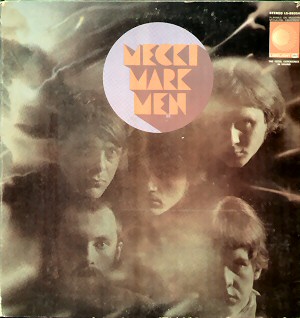
track listing:
Side A :
1. Opening (2:43)
2. Get Up (3:04)
3. Free (4:08)
4. I Forgot It (4:06)
5. Love Your Life (4:15)
Side B :
1. I Had a Horse (3:33)
2. Scream (3:38)
3. Sweet Movin’ (2:48)
4. Enlightment (3:46)
5. Love Feeling (3:44)
6. Please (4:12)
line-up:

Björn Fredholm: drums, congas
Clas Svanberg: guitar
Hans Nordström: saxophone, flute
Mecki Bodemark: organ, vocals
Thomas Gartz: drums, vibraphone, sitar
A first pressing of the rare self-titled FIRST lp by Swedish band MECKI MARK MEN as released on Limelight LS-86054 in 1968 in the US.
Here what Ron Moore's UNDERGROUND SOUNDS / ACID ARCHIVES Website has to say about this:
Mecki Mark Men: Swedish group. trippy jazzy experimental rock with electronics, lead organ, sitar, and distorted leads. good lp! The band later evolved into the progressive group Kebnekajse.
Lead by keyboardist and vocalist Mecki Bodemark, MECKI MARK MEN are considered one of the first big Swedish psychedlic acts. They released an eponymous album in 1968 but soon after, Bodemark went his own way and teemed up with a threesome called the BABY GRANDMOTHERS to form MECKI MARK MEN. In 1968, they were the supporting act for FRANK ZAPPA AND THE MOTHERS OF INVENTION at Stockholm’s Concert House, as well as for JIMI HENDRIX during his Swedish tour. In 1969, they released a second album called “Running in the Summer Night”, made TV appearances and were part of the Swedish cast of the popular musical “Hair”. The following year, they went on a U.S. tour and played at rock festivals headlining The BYRDS, SLY & THE FAMILY STONE and JETHRO TULL among others. However, the tour ended up in chaos. They had stayed there for 3 months yet their visas were only valid for 6 weeks; they were also stuck in a hotel room they couldn’t afford. So they made a deal with their manager, returned home and paid their debts by recording a third album (“Marathon”). They then broke up, with most of the cast soon resurfacing as KEBNEKAISE. They released a fourth album in 1979 under their original name, where Mecki Bodemark features as the only original member.
Typical of 60’s psych and R&B, their music resembles that of JIMI HENDRIX, IRON BUTTERFLY and VANILLA FUDGE: trippy, brain melting distorted lead guitar with plenty of fuzz and wah-wah, and lots of wasted, stoned out vocals from Bodemark who, btw, does the same things with his formidable Hammond organ as Hendrix with his guitar. Their better release is perhaps “Running in the Summer Night”, an album of heavy acid space rock where everyone is at his best, particularly Bodemark and guitar wizard Kenny Häkansson. Source: Progarchives
Hope you enjoy!!!
download link
pw:timospsychedelicious
Mecki Mark Men - 1969 - Running In The Summer Night
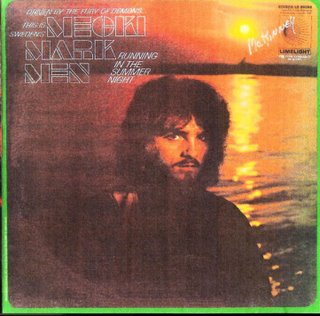
track listing:
Side A:
1. Sweet Swede Girls (4:20)
2. Playing Child (4:40)
3. Is He Safe? (4:13)
4. Don´t Wanna Hurt You (4:00)
5. Future On The Road (4:46)
Side B:
1. The Life Cycle, a) Spoken Intro (0:13)
2. The Life Cycle, b) Born (3:59)
3. The Life Cycle, c) Different Directions (2:54)
4. The Life Cycle, d) Being Is More Than Life (2:46)
5. Help Me Somebody (2:29)
6. Butterfly (3:18)
7. Running In The Summernight (5:13)
Bonus tracks:
1. Future on the Road (6:04)
2. The Life Cycle (9:39)
line-up:
Bella Ferlin: bass
Kenny Hakansson: Guitar
Mecki Bodemark: Organ, Vocals
Pelle Ekman: Drums
download link part1
download link part2
pw: timospsychedelicious
Cheers,
Timo
Mittwoch, Mai 24, 2006
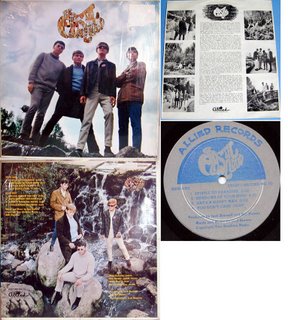
Track Listing:
1. Epistle to Paradise
2. Shadows of Your Mind
3. Art's a Happy Man
4. You Don't Care
5. Bridge Under The Sky
6. Face Behind the Sun
7. Dainty General Rides
8. Civilization Machine
Line-up:
Don Brewer (guitar, vocals)
Brian Madill (bass)
Michael Cadieux (guitar)
Randy Umphrey (drums)
This 4-piece act from Pickering, Ontario were a mysterious blend of psychedelia and Tolkien mythology. In the 30 years since the release of their only album -- 1968's self-titled effort, very little is known about this act except that they could be compared, stylistically, to Strawberry Alarm Clock, The Chocolate Watchband or any other psychedelic/progressive act from the late sixties.
Like Reign Ghost, Plastic Cloud were trying to expand the boundaries set by flaccid Canadian AM radio at the time and were very inaccessible to radio which would explain their one and only release.
Research has failed to turn up any mention of this act and even Laser's Edge, who re-issued their single disc in 1991, 1998, and Pacemaker who re-issued it in 2004 has no additional information on them.
Plastic Cloud "Plastic Cloud" CD reissue of infamous Canadian 60s psychedelic hard rock with stinging over the top and out of control insane fuzz guitar.
The label says: "In 1968, the Plastic Cloud recorded, quite simply, one of the greatest psychedelic albums ever made. This is one hip album, full of catchy melodies and hippie harmonies, as well as some of the most superb (and trippiest) fuzz guitar ever recorded. There is no point singling out a specific track, they are all excellent—one is equally as good as the next. We feel that it’s about time this fine record got it’s compact disc due, so we have gone all out for this reissue—it is remastered from the tapes; the accompanying twenty-page booklet has all the lyrics, thanks to Don Brewer, the man who wrote them, as well as rare photos and a replica of an original press release that must be seen to be believed. Essential psychedelia! LP version in heavy cardboard gatefold jacket will be available in June."
download link
pw:timospsychedelicious
Dienstag, Mai 23, 2006
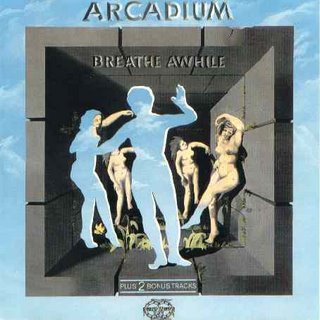
Track Listing:
1. I'm on My Way - 11:51
2. Poor Lady - 3:59
3. Walk on the Bad Side - 7:35
4. Woman of a Thousand Years - 3:39
5. Change Me - 4:47
6. It Takes a Woman - 3:53
7. Birth, Life and Death - 10:19
Bonus Tracks:
8. Sing My Song - 4:18
9. Riding Alone - 2:48
Line-up:
Graham Best - Bass, Vocals
Allan Ellwood - Organ, Vocals
John Albert Parker - Drums
Robert Ellwood - Lead Guitar, Vocals
Miguel Sergides - 12-String Guitar, Vocals

Arcadium was another list of obscure British psychedelic bands. They had their start playing at such clubs as The Middle Earth (where every act you can imagine from well known, like Pink Floyd, to little known acts like Writing on the Wall, Wooden O, and Tam White were seen performing there). A small label called Middle Earth, who released only five albums, (one being a compilation called Earthed, another by Writing on the Wall called The Power of the Picts which I have reviewed here) released Breathe Awhile their one and only LP.
The band consisted of (presumably) brothers Allan Ellwood (organ, vocals) and Robert Ellwood (lead guitar, vocals), as well as John Albert Parker (drums), Graham Best (bass, vocals), and Miguel Sergides (12-string guitar, vocals). The music is late '60s British psychedelia with some early prog leanings, where guitar and Hammond organ dominates.
The vocals are a bit sloppy, but nothing that I find particularly bothersome. The album opens up with the 11:50 minute "I'm On My Way". Starts off slowly, with some psychedelic vocals, eventually the band starts jamming and it gets more intense as it goes on.
"Poor Lady" is a short piece, but it's such a cool piece, very catchy piece as well. The 7:34 "Walk on the Bad Side" starts off more in the psychedelic pop side, but don't let that deceive you, as the music keeps getting better and better and more intense, and the pop style was pretty much thrown out the window after a couple minutes!
"Woman of a Thousand Years", not to be confused with the Fleetwood Mac song found off their album Future Games (1971), it's a totally different song. This piece bears passing resemblance to Van der Graaf Generator (although the only album VdGG had released at the time was The Aerosol Grey Machine), especially in the organ and almost Peter Hammill-like vocals. But of course, the music is nowhere as complex as VdGG is known for.
The next two cuts, "Change Me" and "It Takes a Woman" might not be as catchy as say, "Poor Lady", but they're still excellent cuts. The album closes with the 10:17 epic, "Birth, Life and Death" where the bands gets in to more killer jams, with some more great psychedelic vocal passages.
While the original LP is very hard to come by, Repertoire Records in Germany had reissed this on CD with two bonus cuts, "Sing My Song" and "Riding Alone", both originally appearing on a single the band put out the same time as Breathe Awhile, which compliments the album very nicely (as the music pretty much in the same vein). Another totally obscure gem worth looking in to! By Carl Dexter (2004); Source: www.hippy.com
download
pw:timospsychedelicious
Freitag, Mai 19, 2006
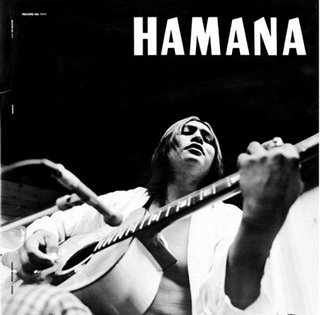
tracklist:
01. The meek shall inherit the earth
02. Why can't I understand
03. Be free with me
04. I remember your smile
05. On the road
06. One night
07. Future goodbyes
08. Show me
09. Message to Crystal
10. Shine on
11. Peace is within you
Hamana's debut album recorded in 1974, was issued on the local Phoenix label, Canyon Records. To most of the '60s psychedelic rock/folk fans this is almost an unknown album, original pressings seem to have disappeared, only a few copies are known in collector's hands. Bruce Hamana, a native American, is a member of the Indian Hopi Tribe and went in 1969 to college near San Francisco to live 'in the white man's world.' Instead of traditional native American themes he felt like writing 'modern, revolutionary, contemporary music' -- the result you hear on this album is powerful and melodic, and expresses perfectly the sunny California peace, love & freedom feeling, but also contains a social-critical message.'One of these days everything is gonna change, things you take for granted will be taken away from you.' The music itself is emotive with strong vocals, lots of Westcoast psychedelic guitar flashes, a bit garage feeling but also loner folk style with native American elements. The appeal of this album reminds of Quicksilver Messenger Service, The Byrds, X.I.T, Neil Young, Buffalo Springfield, Garrett Lund. Near unbelievable that on these recordings all instruments, bass, guitars, vocals and drums have been played by Hamana himself, to get overdubbed and to become finally a tasty and atmospheric stereo acoustic/electric mix."
download link
pw:timospsychedelicious
Donnerstag, Mai 11, 2006
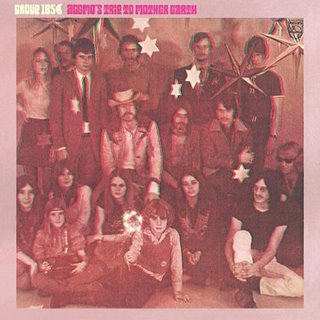
track list:
01. Steel Stings 3:03
02. Little Fly 4:27
03. I Put My Hand On Your Shoulder 13:25
04. You Did It Too Hard 2:10
05. A Point In This Life 5:02
06. Refound 3:11
07. Reborn 3:22
bonus tracks:
08. Misty Night 3:31
09. Look Around 2:35
10. I Want More 2:04
11. I Know (La Pensée) 3:12
12. Mother No-Head 3:28
13. Ever Ever Green 3:18
14. Zero 3:30
15. Frozen Mind 3:40
16. We Love Live (Like We Love You) 4:30
17. Fire 2:31
18. Have You Ever Heard 3:34
19. 1000 Years Before [ previously unreleased ] 2:38
20. Dream Of The Future [ previously unreleased ] 2:33
line-up:
PETER SJARDIN : keyboards-flute -vocals
DANIËL VAN BERGEN : guitar

RUUD VAN BUREN : bass
BEER KLAASSE : drums
In late 1968, a few month after the issue of "Agemos Trip To Mother Earth" Group 1850 disbanded in the first place. Shortly after that Peter Sjardin and Daniel Van Bergen reactivated the group though and recruited three new musicians. Drummer Beer Klaasse, being of the first line-up, was destined to become an active progger a couple of years later. In October 1969 the new Group 1850 recorded their second album which was issued in the same year, too.
Even if there were changes of the line-up "Paradise Now" is kinda in the same style as "Agemo's Trip To Mother Earth". The strains and sounds on "Paradise Now" are in a more wavering and more spacey style, but principally this album is in the same progressive-psychedelic style as their debut album. To me "Agemos Trip To Mother Earth" is the better album. That's why i posted this one for you. Relax and enjoy!
Timo
download link
pw:timospsychedelicious
Mittwoch, Mai 10, 2006
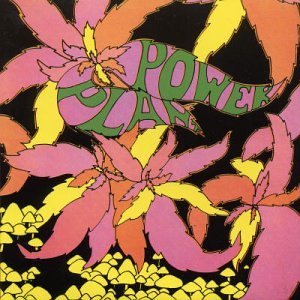
track list:
1 Evolution 3:29
2 This Way Please 5:04
3 Starvation 2:54
4 I'll Be Around 3:01
5 Seeing Is Believing 2:21
6 My Time 3:53
7 Nice Surprise 2:53
8 Every Day 4:00
9 Tell Me Why 2:09
10Reaching Out to You 2:34
line-up:
Jimmy Bird: guitar
Bill Hallmark: bass
George Kinney: vocals
Tom Ramsey: guitar
Bobby Rector: drums, percussion
This band is not to be confused with the 90s ritual-magick band. I'm sure I'll love them too, but (like Nirvana) they should have chosen a different name; this one has been taken since the 60s. The Golden Dawn to which I presently refer produced some of the hardest-rocking metaphysics you'll ever hear. Texas produced some of the finest music of the era, a good deal of it emanating from the International Artists label, who had Thirteenth Floor Elevators hogging most of the glory but also preserved such true freaks as the Red Crayola for incredulous modern ears.
That would have been plenty, but they also had The Golden Dawn on the roster, who if the Elevators had never existed would have been the best psychedelic band in Texas. Perhaps in fact they were, but they only managed one album (A Power Plant in 1968) and not a very long one at that. Laboring under the shadow of the Elevators and the Crayola, their star never quite attained the legendary luminescence of their peers...but Texas music doesn't get any better than this. The Golden Dawn was out on as farflung a spiritual tangent as were the Elevators, yet they played much tighter rock and roll. (The Red Crayola were lightyears past either, but they ended up severing themselves from the most minimal standards of coherence to get there.)
So there's a chunk of the playing field that the Golden Dawn will have wholly unto themselves for all eternity. And a glorious chunk it is. Their liner notes attest that they were as heavily into meditation as they were into acid (they weren't shy about the fact they'd read a little Crowley either). Their LP (both cover and title) was as unabashed a celebration of the triumph of sacred herb as anybody could desire. One wishes more present-day bands would be as militant about it. There are things like The Chronic, but I can't think of much from the rock and roll bands...not the Americans at least. There's a thriving scene in England around Hawkwind, Bevis Frond, Gong, and a hundred other interlocking bands. Prime Minister Blair, for all his punk roots, probably won't consider giving them their Stonehenge back (as if Maggie had ever had the right to take it away), but even if they don't have their standing stones the freaks still have each other. In America, unfortunately, hive mentality remains on the throne. So if by chance you inhale, don't hold your breath.
Remember that cereal commercial, filmed entirely in yellow, tawny, electric brown and orange, and featuring sunbeams glistening off of a haystack? Some corn-pone voice would drawl, It's gonna be a gol-den day! Surely there were many lovely days for this band, sneaking a toke or two behind the barn. Ah, yes, people breathed easier in them thar days...The hell they did--you don't believe that, do you? We're talking Texas! In the 60s! Paranoia was one of the very emblems of hipness. If you were into any sort of chemical adventuring beyond coffee, beer or cigarettes, you were best off assuming your phone was being tapped and the FBI was following you around, because it was not at all inconceivable. And the local cops would be more than happy to pick up from the feds whatever slack there was. It was one of those historic changing-of-the-guard moments. You know what that means--you're busted! Or at least fearful of it. Nowadays it's hard to appreciate what a brave gesture it was for a rock band in that place and time to put it all on the line, flaunting their lifestyle choices in so provocative a manner.
These people truly were outrageous in a way to which most moderns have forgotten even to aspire--because back then the outraging of certain authority figures over that particular set of issues could get you anything from a fractured skull to 10-to-20 years in jail. Or both. Lest we forget, in the more white-trash areas of Texas (and just about anyplace else in the country where the kids still eat lead paint chips) such a fate can easily be manufactured for you, to this very day.
If I may digress: That's one thing nobody is ever willing to give Deadheads credit for--true grit. Punk was little more than a fashion statement after the first few years, and unlikely to get you more than a lot of dirty looks, but Deadheads (especially in the years before their MTV coronation as a valid subculture) had guts. Year after year they'd go out on tour, knowing full well that they were sitting ducks for every narc within 500 miles of the show who was too lazy or chickenshit to earn a badge doing real policework and picked upon lamblike suburban tie-dyes for the crime of flaunting themselves in front of somebody else's parents instead. (Fun Facts To Know And Tell: During WWII, the theme song of the Bulgarian resistance was entitled He Falls In the Battle For Our Freedom. I'm not even Bulgarian, and yet it comes to mind.)
What does all this have to do with the Golden Dawn? What, you mean the G.D. initials aren't enough?..welllllll... The only parallel in recent times that I can draw to the atmosphere of young Texas in the late 60s is that of Deadheads in the early 90s being thrown in jail for nothing more or worse than their chemical preferences. (Which is going to be the next cultural war, after we win the one for freedom in our sexual preferences. Sign up now. We're gonna need something to keep us entertained in our old age.) Anyway...I ramble ridiculously, but the fact remains that The Golden Dawn were Texas kids who were into peace, pot and microdot, as well as meditation and various metaphysical practices...and while they never were as persecuted so publicly and spectacularly as the Elevators, they lived and breathed and did their very best to practice their peace-and-love in a poisonous, rednecked, hate-filled environment not of their making, which is why they played their rock and roll with a viciousness that the Dead Kennedys or Fear never had a prayer of attempting. Which is not to say that the latter bands weren't louder or more raucous overall, but when all is said and done, they were merely doing what was expected of them. When the Golden Dawn were doing their thing nobody had ever heard it before, and there was no niche that had already been carved out in society for them. Nowadays you can go to the mall and the New Age boutique is right next to the body-piercing cubicle, but people back then were obliged to make everything up as they went along.
This is why the freaks of the 60s were the freaks of the century. There are modes of expression developed by latter generations that were inconceivable during the Summer of Love, but the only reason there was a possibility for such things was that the 70s and 80s kids stood on the shoulders of giants. One could say that there would have been no hippies had it not been for Elvis on the one hand and the beatniks on the other--but the hippies didn't feel any particular debt to either, nor was there any trace of the kill-the-father hostility that the hippies ultimately inspired. Which is the other thing the punks owed to the hippies--a context. Johnny Rotten used to parade around in a homemade, self-mutilated I Hate Pink Floyd t-shirt. I've never lost any sleep over that, but it begs the question: what would Johnny have been had there never been a Pink Floyd to hate? Precious little--a Teddy Boy with bad teeth, muttering to himself about life on the dole. Since killing-the-father is what punk is all about, one couldn't have expected anyone to admit it at the time, but now that punk is synonymous with Boring Old Fart it's long overdue that somebody ought to fess up.No matter. The rock and roll on this record kicks and growls and leaves tooth-marks on your aura even as it elevates your consciousness. By Melodylaughter
Those two nice guys who left a comment on Shiva's Headband - Take Me To The Mountains might be glad to see this post since Golden Dawn hail from Texas, too. To me Texas psychdelia is absolutely awesome! I love the Elevators and Shiva's Headband as well as Golden Dawn. Enjoy this one, you're gonna love it for sure! Like Melodylaughter said, it's their only one...very regrettable! I added a poster pic for you which has a more sparkling and shining effect imo :-) Timo
h**p://rapidshare.de/files/19536647/Power_Plant.rar.html
no password required this time (posted it once on my forum)

track list:
1. Have To Whack It Up 2:20
2. Leaping Beauties For Rudy_Marcus Junior 7:02
3. Xhorkom_Ramadhan_In The Snow For A Blow 8:07
4. Uno Transito Clapori 2:28
5. Gum Arabic_Confucius 8:18
6. Nymphenburger 6:15
7. Hahibi Bay_Beast Of Sweden_Boehm Constrictor 6:22
8. Traditional_Arranged By East Of Eden 1:36
Line-up:
 Dave Arbus: violin, wind instruments
Dave Arbus: violin, wind instrumentsGeoff Britton: drums, percussion
Ron Caines: saxophones, vocals
Geoff Nicholson: guitars, vocals
Andy Sneddon: bass
When East of Eden's 2nd Album 'Snafu' was released in early 1970 Rock music was coming to the end of it's most creative decade. For some people this album has been regarded as
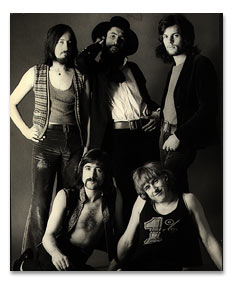 an indicator of what was to come - Jazz/ rock Fusion, elements of Ska & Reggae, Classical and Folk, plus free improvisation within a Rock format. The three original founder members - Ron Caines (Saxophone), Dave Arbus (Violin), and Geoff Nicholson (Guitar) started recording again in 1997, returning to the influences that first inspired them, and have released 2 albums since that date, KALIPSE (Transatlantic TRACD303) and ARMADILLO (Talking Elephant TECD015). Their new album GRAFFITO (due for release later this year) continues their development of ideas pursued more than 30 years ago when they were at the forefront of new directions in music.
an indicator of what was to come - Jazz/ rock Fusion, elements of Ska & Reggae, Classical and Folk, plus free improvisation within a Rock format. The three original founder members - Ron Caines (Saxophone), Dave Arbus (Violin), and Geoff Nicholson (Guitar) started recording again in 1997, returning to the influences that first inspired them, and have released 2 albums since that date, KALIPSE (Transatlantic TRACD303) and ARMADILLO (Talking Elephant TECD015). Their new album GRAFFITO (due for release later this year) continues their development of ideas pursued more than 30 years ago when they were at the forefront of new directions in music.download link
pw: timospsychedelicious
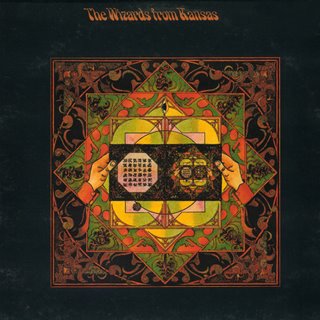

track list:
1 - High Flying Bird
2 - High Mister
3 - 912 1/2 Mass
4 - Codine
5 - Freedom Speech
6 - Flyaway Days
7 - Misty Mountainside
8 - Country Dawn
9 - She Rides With Witches
line-up:
Robert Joseph Menadier: bass, vocal
Marc Evan Caplan: drums, percussion
John Paul Coffin: lead guitar
Robert Manson Crain: guitar, vocals
Harold Earl Pierce: guitar, vocals
Actually hailing from Kansas, the Wizard’s were an obscure country-influenced outfit
whose debut album featured some fine versions of classics from the period, including
Buffy St Marie’s Codine, as well as some excellent originals such as Misty Mountainside,
Country Dawn and She Rides With Witches.
The original five-piece band enjoyed considerable local success, and eventually found
themselves playing the Fillmore East, a gig which led to offers of a number of record
deals which the group initially declined. However, towards the end of 1969 Mercury
Records finally convinced them to sign to the label, and their eponymous first (and only)
album was recorded in the summer of 1970 in San Francisco. During the recording of the
album, several band members decided they would rather play jazz, and duly departed
to pursue their interests , leaving Mercury with a newly recorded album and no band to
promote it. Mercury lost interest and the album sunk without trace.
There is a lot of fine stuff on this album, and the band exhibited a particularly
impressive range of tight vocal harmonies . A highly recommended album that is extremely collectable.
Mastered at Abbey Road by Steve Rooke
Pressed on 180g virgin vinyl at Portalspacerecords in Hayes, England, using EMI’s
1400 series presses
Original artwork
A Limited Edition of 1,000 numbered LPs
download link
pw:timospsychedelicious
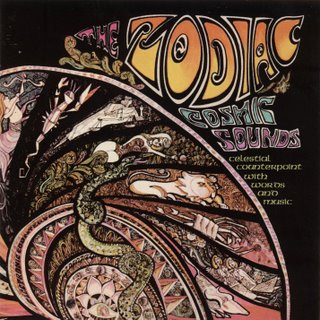

track list:
1. Aries -- The Fire Fighter
2. Taurus -- The Voluptuary
3. Gemini -- The Cool Eye
4. Cancer -- The Moonchild
5. Leo -- The Lord of Lights
6. Virgo -- The Perceptual Perfectionist
7. Libra -- The Flowerchild
8. Scorpio -- The Passionate Hero
9. Sagittarius -- The Versatile Daredevil
10. Capricorn -- The Uncapricious Climber
11. Aquarius -- The Lover of Life
12. Pisces -- The Peace Piper
line-up:
Cyrus Farayer: narration
Paul Beaver: Moog and other electronic instruments
Emil Richardson: exotic percussion
Bud Shank: bass flute
Hal Blaine: drums
Carol Kaye: bass guitar
The Zodiac, the greatest semi-band in the world? This little piece of work is their only album together, though many of them had and would work together again in other stuff. Anyhoohas, the music is excellent, and the narration is...we, the narration is utterly 60s. It says "Must Be Played In The Dark" on the cover, and that's approporiate, but for the words, an additional "Must be Played While Stoned" would be nice. Cyrus Faryar has a cool voice, but Jac Wilson's words are so dated and sound so silly now that it sounds totally absurd. My dad laughs every time he hears the words, expecially "six men and six trees" on Taurus.
The Moog is hot stuff on this one. PaulBeaver blows off some sweet riffs. Emil Richards shows off fine percussive tricks, Hal Blaine shows fine drumming, finer than any of his session work. Carol Kaye has some fine bass goin' too. Bud Shank can creep you out with his flute work, Nobody knows the guitar players' names, which is sad, 'cause they give this a hot California acid rock feel that makes me wonder when Grace Slick will jump in. Wilson's poetry sounds pretty Jim Morrison also!
Highlights:
Leo-Lord Of Lights, this is the happiest song on the album. Real coo, guitar funk there!
Taurus-The Voluptuary: Heavy Metal synth blasts the opening riff into youe ears and some creepy flute keeps you goin.
Sagittarius-The Versatile Daredevil: Circus music gone mad. Swirling sythns tricks and Cyrus's slightly crazy vocals make this worthwhile
Capricorn-The Uncapricious Climber: More creepy flute and some exotic synth make this is cool little piece of ghost rock.
Personally i do like this gem very much. This narrative psychedelicious masterpiece can't be missed in any collection. You have my word,top notch! Enjoy, let me know whether you liked it, i am thrilled already...:-) see ya
download link
pw:timospsychedelicious
Dienstag, Mai 09, 2006


track list:
1. Golden Earrings
2. Hang On To A Dream
3. Never Too Far
4. Scarlet Ribbons
5. You Upset The Grace Of Living
6. Can You Travel In The Dark Alone
7. Nature Boy
8. Tiffany Rings
9. Me About You
10.I Watch The Moon
line-up:
Davey Bauer: Drums
Bob Muller: Bass
Peter Sando: Guitar
Frank Hubach: Piano, Electric Piano, Harpsichord, Organ

Beautiful Sundazed reissue of this holy US 1969 psych album. Dreamy and trippy US '60s psych that has swirling keyboards and drifting guitars all over a selection of acidified melodic cover versions ("Golden Earrings" and "Hang On To A Dream") as well as brilliant originals ("Can You Travel In The Dark Alone"). An album that is worthy of it's reputation.
Brief History:
GANDALF, formerly the RAHGOOS prior to their LP release, appeared at various New York clubs throughout the '60's; such as "The Phone Booth", Scott Muni's "Rolling Stone", "The Electric Circus", Murray the K's "World", and the legendary "Night Owl Cafe" in Greenwich Village. It was there that the RAHGOOS met songwriters Garry Bonner and Alan Gordon who brought the band to the attention of record producers Koppelman & Rubin. K&R signed the band and immediately started work on an album for their newly formed "Hot Biscuit Disc Company" label which was distributed through Capitol.
 K&R suggested various name changes which did not sit well with the group. However, they ultimately decided to forfeit their name and local fan recognition to appease K&R. During a gig at the "Rolling Stone", drummer Davey Bauer was passing the time reading Tolkien's "The Hobbit" while the rest of the band went through the ritual of brainstorming a band name. Davey chimed in, "How about "GANDALF AND THE WIZARDS". That name stuck. The project was delayed after the deal with Capitol fell apart. In the interim, the band lost faith and also dissolved. Subsequently, K&R & Capitol parted ways with the agreement that two more LP's would be released on the Capitol label, and GANDALF was one of them. It was finally released in early 1969, with no band to back it and little promotion. Two songs were penned by guitarist Peter Sando and one, "Can You Travel in the Dark Alone", received a flurry of FM play. The late Allison Steele, "The Nightbird", on WNEW-FM New York, would introduce the song with a lengthy dose of her inimitable psychedelic poetry. The album has been bootlegged several times on vinyl, and finally legitimately re-released on CD by the UK based See For Miles label in 1997 and now, back in the USA on SUNDAZED in 2002. The single, "Golden Earrings", also appears on the UK Temple Records compilation disc "Psychedelic Frequencies" (TMPCD027). "Hang On To A Dream" is included in "Hippy Dip" on EMI (CDEM 1623).
K&R suggested various name changes which did not sit well with the group. However, they ultimately decided to forfeit their name and local fan recognition to appease K&R. During a gig at the "Rolling Stone", drummer Davey Bauer was passing the time reading Tolkien's "The Hobbit" while the rest of the band went through the ritual of brainstorming a band name. Davey chimed in, "How about "GANDALF AND THE WIZARDS". That name stuck. The project was delayed after the deal with Capitol fell apart. In the interim, the band lost faith and also dissolved. Subsequently, K&R & Capitol parted ways with the agreement that two more LP's would be released on the Capitol label, and GANDALF was one of them. It was finally released in early 1969, with no band to back it and little promotion. Two songs were penned by guitarist Peter Sando and one, "Can You Travel in the Dark Alone", received a flurry of FM play. The late Allison Steele, "The Nightbird", on WNEW-FM New York, would introduce the song with a lengthy dose of her inimitable psychedelic poetry. The album has been bootlegged several times on vinyl, and finally legitimately re-released on CD by the UK based See For Miles label in 1997 and now, back in the USA on SUNDAZED in 2002. The single, "Golden Earrings", also appears on the UK Temple Records compilation disc "Psychedelic Frequencies" (TMPCD027). "Hang On To A Dream" is included in "Hippy Dip" on EMI (CDEM 1623).download link
pw:timospsychedelicious

track list:
1. Cold Embrace
2. The Dark Lord
3. The Sky is Burning
4. You're Alone Now
5. Grass
6. It's Only Love
7. Horse
8. Escalator
9. Angry Faces
10.Midsummer Night's Dream
11.Season of The Witch
12.Yesterlove
13.Back Door Man
line-up:
Sam Gopal: tablas
Lemmy Kilminster: guitar, vocals
Roger D'Elia: guitar
Phil Duke: bass
Sam Gopal's biography:
Born in Malaysia, Sam Gopal started to learn to play Tablas from the age of seven.
Came to London to study in 1962.
1965/66 he started the SAM GOPAL DREAM with Mick Hutchinson on guitar, Pete Sears on bass, and Andy Clark (Keyboards) joined a little bit later. In 1967 recorded a few tracks for Screen Gems with Gus Dudgeon as engineer.
In 1968 started the next band SAM GOPAL with Lemmy.(guitar/ vocals), Roger D'Elia (guitar) and Phil Duke on bass. Recorded an album "Escalator" for Stable Records. Were managed by Robert Stigwood. Also recorded a Single "Horse" / "Back Door Man" .
In 1969 started the next band, also called SAM GOPAL, with Alan Mark (vocals), Mox Gowland (harmonica & flutes), Micky Finn Waller (guitar), and Freddie Gandy (bass). Recorded a few tracks for Stable including "Somebody stole the Sun".
Spent some time in Amsterdam and changed the name of the band from SAM GOPAL to "COSMOSIS". Managed by R.Cole/Peter Grant, and brought in Bernie Holland (guitar). Recorded a few tracks for the Led Zep people. Around this time'71, Sam Gopal had a bad motor accident, and sidelined for a couple of years. During this period, recorded an album "Building B".
In 1976 went to Paris, and there recorded for Radio France "Feedback" and "Backfeed" with Didier Malherbe (sax) and Patrice Lemoine (piano).
From 1981 to 1988, spent time in Nepal, where he had been studying Tablas the previous years, and to continue further, and also allowing his own music to come through.
In 1988, he came to Berlin and started in 1989 his next "one off" band "SANGIT" with a live recording at the Berlin/Philharmonie /Kammermusiksaal. "SANGIT" recorded the soundtrack for "The Great Moghuls", six documentary films for Channel Four.
In 1990 Sam Gopal recorded an album "Soap Opera" with Andy Clark (Keyboards & vocals) in Berlin. In 1991, he recorded the next album "Not For Sale" (working title) with Andy Clark (Keyboards & vocals) and studio musicians, also in Berlin.
In the 90`s Sam Gopal put together his need and desire to extend his music into the 12 tone Tabla direction, which opens up a whole new melodic world of over-tones and rhythms for him.
Around this time Sam Gopal recorded his own album "FATHER MUCKER" which got completed in 1999. On track 5 "SOLID WATER BLUES" you hear the First Blues played on Tablas in the history of Music.
Since the release of "FATHER MUCKER" in June 1999, he is completing preparations for his next album "FINGER McTRIP".
OTHER RECORDINGS of SAM GOPAL:
In 1980 recorded in Olympic Studios London, few tracks including
"Sell out Joe" (Vocals), "Falling In" and "Showdown".
In 1989 recorded an album "Largo" in Zurich.
In 1992, a Live Recording of Sam Gopal's one-off Band "Brain Tonic", also called Brain Tonic.
In 1993, recorded an album "Blind Man's Movie" in Munich.
download link
password:timospsychedelicious
Montag, Mai 08, 2006

track list:
1. Druganaut (EXtended) 8:16
2. Buffalo Swan 9:13
3. Bicycle Man 3:28
4. No Satisfaction (Campfire Version) 3:47
Blowing out of Canada's Black Mountain Army art-collective like a scarlet slippered hurricane, 'Druganaut' is the first missive to be issued from this underground supergroup's forthcoming LP. Featuring members of Jerk With A Bomb, Sinoa Caves, Blood Meridian and The Pink Mountaintops, 'Druganaut' (oh, the verbal wit!) has a serious fire in its belly and wants to tell you all about it. 'Druganaut' is a bit like Mogwai but with a serious injection of 60's soul; Post-Brit Funk perhaps? Apart from the middle bit that goes all glam. Oh, and the Pink Floyd atmospherics. And Neil Young riffs... Whatever it is, it certainly skitters along at a sprightly rate and sounds nothing like you'd imagine a Coldplay support act to, with the B-side 'Buffalo Swan' a similarly expansive and backward glancing ride. Of the two EP bonus cuts, 'Bicycle Man' (from their split 7" with Destroyer) is Ye Olde rock & roll (handclaps and all!), whilst 'No Satisfaction (Campfire Version)' is probably much as you imagine.
I love this druganaut extended version!
download link
pw:timospsychedelicious
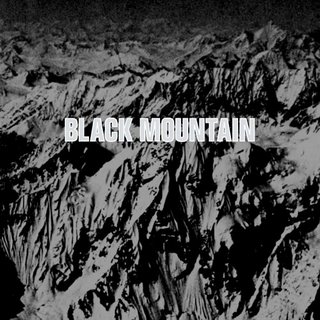
track list:
1. Modern Music 2:44
2. Don't Run Our Hearts Around 6:03
3. Druganaut 3:47
4. No Satisfaction 3:47
5. Set Us Free 6:45
6. No Hits 6:45
7. Heart Of Snow 7:59
8. Faulty Times 8:34
link: http://jagjaguwar.com/onesheet.php?cat=JAG070
line-up:
Amber Webber - vocals
Matt Camirand - bass
Jeremy Schmidt - keyboards
Joshua Wells - drums
Stephen McBean - vocals and guitar
Black Mountain is an indie-rock band led by Stephen McBean. The band is closely influenced by many past artists, and criticisms often walk the line between praising adept imitation and blasting blatant re-use of old ideas. The band is a psychedelic amalgamation of Neil Young and Buffalo Springfield, Led Zeppelin, Jimi Hendrix, Pink Floyd, the Velvet Underground, and Black Sabbath.

Leader Stephen McBean also heads another similarly-named band, Pink Mountaintops, who are the more experimental side of McBean's musical abilities. Black Mountain is the front line band for Black Mountain Army, the record label. By day, McBean works in a needle-exchange facility for drug addicts, near Vancouver's infamous Main & Hastings intersection, widely considered to be the heroin capital of Canada, if not North America. The name "Black Mountain" is a reference to a large pile of marijuana.
Black Mountain, which hails from Vancouver, has released one self-titled LP; an EP titled 'Druganaut' (coming after this post) was released in October, 2004. 'Destroyer' was released in Fall 2004.
download link
pw:timospsychedelicious

track list:
1. 98 Steps 3:25
2. You Must Be A Witch 3:35
3. Train She's On 2:53
4. Born To Be Wild 3:36
line-up:
Ric Albin Vocals
Roger Clay Guitars
David Provost Bass (1/2/3)
Steve Liberty Bass (4)
Phil Cohen Drums
Tom Morgan Keyboards (3/4)
From the Press Kit:
The Droogs, The Kid and the Gorilla Beat (Between Sets)
"Heard anything good lately?" the kid asked me between sets.
"I dunno. A couple of the Droogs dropped by the other night with their new record. Four songs. That sounded pretty good."
"Yeah? What's it called?"
"Heads Examined." I could tell he didn't believe me.
"I know these guys have been around since the days of whine and poses, but this is their best stuff yet."
"Better than 'Set My Love On You' and 'Ahead Of My Time' on those two Rhino anthologies?"
"Oh yeah." I lit a cigarette.
"They cut a version of 'You Must Be A Witch'. You know, the old Lollipop Shoppe number. Cut it to the bone. The new rhythym section helps."
"Isn't what's-his-name, that bass player from the Textones, playin' with those guys now?"
"David Provost. Yeah, he's on the EP. And the drummer is Phil Cohen, who usta be with the Heaters. Roger Clay is the guitar player. And that's Tom Morgan, from the Textones on 'Born To Be Wild'."
"Still the same singer?"
"Right. Ric Albin. Just a second, lemme get another drink. I just got paid. You want anything?"
"Just get me a coke."
"Man, that stuff'll rot your teeth." I motioned for the nearest bartender, ordered a taqueray 'n' tonic and the kid's coke.
"So are the other two songs originals?"
"More or less. Like '98 Steps' reminds me of the later Yardbirds - you know, the stuff with Jimmy Page - but steamier, and 'Train She's On' has got this real sad, uplifting chorus kinda like, I dunno, the Palace Guard or something like that."
"The 'paisley underground'."
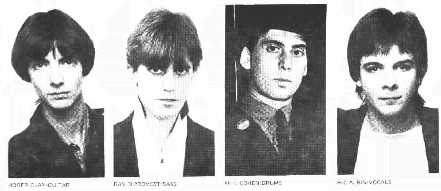
"Oh yeah, right. read all about it, weekly. Another movement from the bowels of the sunsoaked urban jungle that is Los Angeles ... Gimme a break." Our drinks came. I laid six bucks on the bar and turned back to the kid.
"In other words, you've got 29 people who the closest they ever got to windowpane was when they cut themselves on a piece of glass, runnin' around actin' like they found God on a Strawberry Alarm Clock album." The kid grinned and reached for his coke.
"So what's the difference between them and the Droogs?"
"I dunno. Maybe it's the way the Droogs look back with love, but keep an eye on the future. I mean Ric and Roger have been through that cult hero bit - their old singles go for 150 bucks in Europe, bands like the Psychotic Pineapple have covered their tunes - and they know you've got to get your 'Heads Examined'."
"I saw this German fanzine called 'Gorilla Beat' that said the Droogs' last single, 'Only Game In Town' was 'The power pop-punk record of the decade'."
"That's funny. I though it sounded like U2." I turned to rescue my drink from a watery grave. the lights went down.
Onstage the music started......
Don Waller
download link
pw:timospsychedelicious
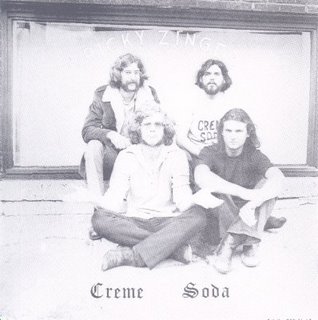
track list:
1. Give It Up (Man) 4:06
2. Tonight 2:58
3. Numero Uno 4:53
4. (I'm) Chewin' Gum 2:41
5. Deep In A Dream 4:28
6. The Nazz Are Blue 3:07
7. Keep It Heavy 2:46
8. Roses All Around 2:11
9. And That Is That 2:02
10.The Beat Song 3:43
11.When It Sun Shines 5:41
12.Daydreamin' 2:23
"Hailing from Milwaukee, Wisconsin, Creme Soda generated a fanatical following based on their legendary single '(I'm) Chewin' Gum/Roses All Around' which appeared on the Trinity label in 1975. Creme Soda are not an easy band to categorise as they were able to play virtually any musical genre with consummate ease. Their only full-length album, Tricky Zingers (which also includes their 'hit' singles), also made its appearance on Trinity (Trinity CST11) in 1975 and despite the considerable interest the record generated, the band, perhaps mindful of the adage 'quit while you're ahead,' did exactly that, never to be heard of again. Tricky Zingers is an impressive and relatively overlooked recording, which, despite being recorded in 1975, has a decidedly mid-'60s feel about it. The eleven self-penned songs range from very good to brilliant, particularly 'Tonight,' 'Keep It Heavy' and 'Roses All Around.' The album's style ranges from folkrock to wasted psychedelia, with two experimental tracks featuring drone effects and backwards guitar thrown in for good measure, as well as a couple of rootsy rock'n' roll numbers."
download link
pw:timospsychedelicious

track list
1. Isle Of Kawi 11:05
2. Bondage 6:20
3. Regitativ 1:51
4. Electronic Nightmare 2:16
5. Death Hymn 5:17
6. Light And Darkness 6:28
7. The Trip 3:58
8. Man of The Void 4:51 (this bonus track is not on this album, only on the reissue album)
Line-up
- Sverre Svendsen / vocal, Mellotron on "Light and Darkness"
- Kjell Evensen / drums
- Arild Andreasson / bass
- Jens-Ivar Andreassen / guitar, Mellotron, synths, piano, organ
- Tor Johnny Hansen / words on "Death Hymn"
Review:
Very obscure Norwegian progressive in the symphonic / electronic mode. Their only album, is keyboard dominated and is a fine example of euro-styled symphonic progressive. The vocalist is almost a Greg Lake carbon copy.
Akasha's self-titled album, originally released in Norway on BAT records, is one of those records that sells for mega-bucks in collector circles and makes Mellotron fans drool with childish delight. A quartet, Akasha consisted of Sverre Svendsen (vocals, Mellotron), Kjell Evensen (drums), Arild Andreassen (bass) and Jens Ivar Andreassen (guitars, Mellotron, synth, piano, organ). Mellotron fans will hve no doubt noticed that two Mellotrons are credited but Svendsen only uses his on one track, "Light and Darkness." Akasha consists of eight tracks, lasting anywhere from two to eleven minutes. Most are 5-6 minutes. The eleven minute "Isle of Kawi" is the opener, and is enough to to send 'tron fans into raving fits, as it is featured prominently amidst the abundant synth work. The synth and Mellotron are the dominant instruments, in that order, while the guitar plays a secondary role. Jens Andreassen exploits his synths to the fullest, wrenching out many "experimental" type analog sounds and noises. Just listen to "Bondage" or "Electronic Nightmare" to hear what Andreassen does with filters and oscillators. Titles like those just mentioned, as well as "Death Hymn" and "Light and Darkness," combined with a "dark" production give Akasha's music a distinct Scandinavian feel. The production also gives it a bit of a dated sound, which is why I never fully got into the album. Akasha could have recorded this in 1971 and got away with it, perhaps, but not late 1976. While I worship at the alter of the 'tron and have a particular fondness for Scandinavian prog, Akasha never caught on with me for one reason or another. But, if your mouth is already watering from reading about some of the key elements Akasha offers, then you need to be contacting your favorite prog dealer. -- Mike Taylor
AKASHA biography
AKASHA is a Norwegian quintet who recorded one strange and fascinating album back in 1977. They are: Kjell Evensen on drums; Arild Andreasson on bass; Jens-Ivar Andreassen on guitar, mellotron, synths, piano and organ; Tor Johnny Hansen is credited for lyrics on one particular track; and Sverre Svendsen handles the mellotron as well as the English vocals - highly reminiscent of Greg LAKE, by the way. Musically speaking, comparisons aren't easy: try to imagine a blend of early GENESIS and the MOO...AKASHA is a Norwegian quintet who recorded one strange and fascinating album back in 1977. They are: Kjell Evensen on drums; Arild Andreasson on bass; Jens-Ivar Andreassen on guitar, mellotron, synths, piano and organ; Tor Johnny Hansen is credited for lyrics on one particular track; and Sverre Svendsen handles the mellotron as well as the English vocals - highly reminiscent of Greg LAKE, by the way. Musically speaking, comparisons aren't easy: try to imagine a blend of early GENESIS and the MOODY BLUES, albeit a much harsher, stranger version of the latter. AKASHA write dark and foreboding prog and lyrics with a strong sci-fi bent. The LP version of their album is now a collectors' item, commanding 3-digit prices on the underground market; even the small Swedish label (APM) that issued its cd version in 1995 has now ceased to be.
The music on their self-titled album (which dons an epic 11-minute opener) is loaded with synths, mellotron and spacey effects that will no doubt send fans straight to 'tron heaven (the mellotron features prominently throughout the album, relegating the guitars to a secondary role). Jens Andreassen exploits his synths to the fullest, wrenching out a variety of experimental analog sounds and noises (what he does with filters and oscillators is simply amazing). The only problem with the album is its poor sound - it was recorded in a bomb cellar of a hotel, in the band's hometown of Finnsnes. Except for this flaw, "Akasha" is brilliant and a true gem of underground Scandinavian prog.
If you fancy plenty of mellotron and spacey experimental sounds (and don't mind a 'so-so' production), no doubt you'll have your hands - and ears! - full with AKASHA.
download link
pw:timospsychedelicious

track list:
1. Tourniquet 2:17
2. Sing A Different Song 4:17
3. Take Off Your Eyes 5:40
4. Soft Margins 4:45
5. Thundermice 3:52
6. Monday Morning Prayer 0:38
7. Gone 4:40
8. Marching Together 3:36
9. Kathryn At Night 3:39
10.Party Hats&Olive Spats 3:24
11.Return Naked 1:57
An officially sanctioned re-issue of this US mystic thoroughly dosed higher key psych artifact from 1973. Think Zerfas/Gandalf meets Bobb Trimble with it's mix mix of acoustic guitars, pop melodies, folk, prog, and just plain weirdness and you're somewhere in the right lysergic area of madness.
Wonderful psychedlelic gem, indispensable!
download link
password:timospsychedelicious
Sonntag, Mai 07, 2006
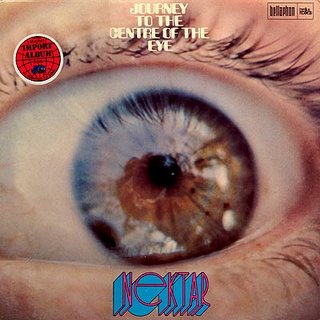

track list:
1. Prelude 1:27
2. Astronauts nightmare 6:22
3. Countenance 3:30
4. The nine lifeless daughters of the sun 2:41
5. Warp oversight 4:28
6. The dream nebula 2:14
7. The dream nebula part II 2:25
8. It's all in the mind 3:22
9. Burn out my eyes 7:48
10. Void of vision 2:01
11. Pupil of the eye 2:46
12. Look inside yourself 0:53
13. Death of the mind 2:52
Total Time: 42:49
Line-up:
-Roye Albrighton / guitars, vocals
-Mick Brockett / liquid lights
-Allan "Taff" Freeman / Mellotron, pianos, organ, vocals
-Ron Howden / drums, percussion
-Derek "Mo" Moore / Mellotron, bass vocals
-Keith Walters / static slides
Review:
Folks unfamiliar with the band Nektar think they are from Germany. What actually transpired was the quartet of Englishmen met in Germany in 1969 and formed the band. Ron Howden (drums, percussion), Derek "Mo" Moore (bass, vocals), Alan "Taff" Freeman (keyboards, vocals) and Roye Albrighton (guitar, lead vocals) would become huge in Germany and nearly broke big the in the U.S.
Eclectic Discs/Dream Nebula Recordings have reissued the four critically acclaimed albums that defined the band's career. "A Tab In The Ocean", "Journey To The Center Of The Eye", "Remember The Future" and "Recycled" are lovingly remastered with detailed liner notes for former fans and the newly indoctrinated to enjoy. Their well- known masterpiece "Remember The Future" was appropriately chosen for the SACD format as well as "Journey To The Center Of The Eye".
Their sound was a progressive-psychedelic mixture of rock that was far ahead of its time. For this listener this was a new wonderful listening experience. Prior to receiving these CDs, I had not heard any Nektar music besides a video of "Remember The Future" on a DVD compilation. I can understand now what all the talk has been about the band reforming and going on tour.
Roye Albrighton was the driving force of this band. His skilled guitar playing set the table for his fellow band mates. Each recording was outstanding and stands as a testament to their importance to the history of prog-rock music. What made this so interesting was how the label broke up each album into two parts respectively, the original recordings versus the newly remastered versions. You are now able to hear succinct differences between the two formats for the first time. Both versions are excellent and it was a treat to get the best of both worlds.
Any prog-rock listener will most certainly enjoy taking in this musical paradise in more than once, I listened to each CD four times myself and I know there will be many more spins of each CD down the road. I look forward to catching Nektar 2004 on the road this year to relive all of these great songs in a live setting. I never would have decided to see them in concert if it wasn't for this remastered series.
My opinion: I love this psychedelic masterpiece which combines so many elements in such a perfect way. There are psychy and krauty as well as proggy elements in the songs. To me their best album. My favourite song on this album is "Void of Vision". Ah I just love this psychy spaced out vibes and music.
download link
password:timospsychedelicious

track list:
1. The Creator Has A Master Plan 9:24
2. Stehaufmädchen 1 1:07
3. Marzipan 8:04
4. Stehaufmädchen 2 1:05
5. You're Still A Part Of Me 5:46
6. Stehaufmädchen 3 1:07
7. Odyssey In Om 30:33!
8. Raga 3:15
First release of this collection of demos and live materieal from this legendary band from Switzerland, best known for their opus An Invisible World Revealed. "1970-1972 were the psychedelic years of the Krokodil from Switzerland. During this period the band recorded a lot of magical songs both live and in the studio which are now after more than thirty years released for the first time. The CD is housed in a nice digipak."
Other albums are:
1. Krokodil (1969)
2. An Invisible World Revealed (1971)
I am gonna post those as well as soon as possible.
download link
download link part2
password:timospsychedelicious
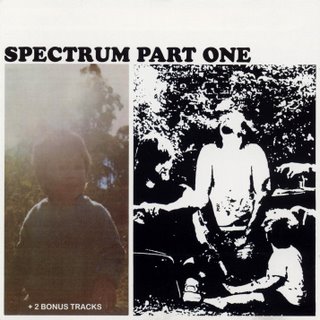

track list:
1. Make your Stash 4:11
2. Fiddling Fool 12:35
3. Super Boy 9:15
4. Drifting 3:27
5. Mumbles I Wonder Why 5:59
6. Launching Place Part 2 (Bonus Track) 3:01
7. I'll Be Gone (Bonus Track) 4:22
Spectrum was an Australian progressive rock band which formed in Melbourne in 1969 and remained in existence until 1973. Its members also performed under the alter-ego Indelible Murtceps.
The central figure in the band was singer-songwriter-guitarist Mike Rudd, a New Zealand born singer, songwriter and guitarist from Christchurch. Mike arrived in Australia in 1966 as rhythm guitarist for the NZ group Chants R&B. That band only lasted a short time after they arrived in Australia, but Rudd remained in Melbourne, teaming up with singer/songwriter Ross Wilson and guitarist Ross Hannaford.
Wilson and Hannaford's first band The Pink Finks (which had also just broken up) worked in a similar vein to Chants, and had already had some local chart success in Melbourne. Mike was invited to be the bass player in a later lineup of their next band, The Party Machine (1967-69).
Rudd, Wilson and Hannaford then formed the more experimentally-oriented Sons of The Vegetal Mother (1969-71), which was an occasional event-based project rather than a full-time band. When that band split, Rudd formed his own band, Spectrum. This marked the beginning of his partnership with bassist Bill Putt, formerly of Melbourne bands Gallery and The Lost Souls; they formed a lasting friendship and musical partnership, and have worked together ever since. Organist Lee Neale came from pop band Nineteen 87, and drummer Mark Kennedy had already worked with Putt in Gallery. Kennedy's considerable skill helped carry the band through a difficult first year, during which time the band honed their skills and found their sound.
Initially, Spectrum drew on the work of contemporary bands like Traffic, Soft Machine and Pink Floyd and they played covers of music by these groups in the early days, but they soon developed their own style. Alongside Putt's solid bass playing and Neale's inventive keyboard work, a key feature of Spectrum's sound was Rudd's guitar playing -- he was one of the few rock guitar players at that time who eschewed the near-universal use of the guitar pick, preferring to play electric guitar with a finger-picking style. Combined with contemporary imrovements in amplification and recording, his playing technique and his use of a vintage Fender Stratocaster guitar allowed Rudd to develop a highly characteristic sound.
Twelve months of performing allowed them to develop their sound and write and refine a substantial set of original material, which became the basis for their first LP. They were regulars at the concerts events held at the various "head" venues around Melbourne like the T.F. Much Ballroom, Garrison and Sebastian's, and they appeared with other leading progressive bands like Tully, Tamam Shud and Sons Of The Vegetal Mother.
Rudd had conceived Spectrum as a concert band, and they generally performed with an elaborate concert set-up that included a large PA and a full multi-media light show; at one stage the band also supplemented their act with contributions from members of the Melbourne performance troupe Tribe. They played at all the major Australian rock festivals of the period, including Wallacia, Myponga, Mulwalla, Rosebud and Sunbury. However, their national success was limited by a lack of radio airplay in other capitals, and the fact that they rarely ventured outside Victoria, visiting other cities only intermittently.
Just prior to being signed up by EMI, Spectrum cut a demo single which they hawked around to record companies as a 7" acetate. One side was an early, folky version of one of the newer songs in their set, "I'll Be Gone"; the flip was another original, "You Just Can't Win". According to rock historian Ian McFarlane, these acetates are now "impossibly rare" and only two or three copies are known to have survived.
Once signed to EMI, the band went into the studio to make their first official recordings, under producer Howard Gable, who had recently re-located from New Zealand and had established himself as one Australia's leading producers with his work for bands including The Masters Apprentices.
Despite a loyal following and much praise from the music press (notably Australia's pop 'bible' Go-Set) the band were virtually broke by mid-1970, when a measure of salvation came in the form of a contract with to the new EMI progressive imprint Harvest. They were signed to a recording contract and soon after they scored a surprise #1 Australian hit with their first single, "I'll Be Gone", which has become one of the most enduring Australian rock songs of that era.
They released their debut LP Spectrum Part One in late 1970. Drummer Mark Kennedy left just after it was recorded, and he was replaced by Ray Arnott. Kennedy later worked with a number of important Australian acts including Ayers Rock.
Spectrum's second album, released in early 1972, was an ambitious 2LP set called Milesago, notable as the first Australian rock double album, and is still regarded as a landmark of Australian progressive music; it was also the first Australian rock album to be recorded using the newly-installed 16-track recorder at Amstrong's Studios in Melbourne, the first studio in Australia to acquire one of these machines.
Unfortunately for Spectrum, the nature of the Melbourne music scene was undergoing a profound change at this time. This was partly due to legislative changes to the age of majority (which had been recently lowered in many Australian states from 21 to 18) and to the licensing laws governing entertainment in hotels in Victoria. These legislative changes coincided with demographic changes -- the young audiences who had patronized the unlicensed dances and discos of the mid-to-late Sixties were now ageing into their late teens and early twenties, and could now be legally admitted into licensed premises.
Seeing the popularity of rock music and realising the financial potential, hoteliers wooed customers into the pubs by putting on popular bands, often free of charge. Consequently, while Spectrum worked to establish themselves as a concert group, the focus was beginning to shift away from the larger concert events and unlicensed city discotheques frequented by 'head' audiences -- whose main drug of choice was cannabis -- and towards the burgeoning pub circuit, where alcohol was cheap, plentiful and, above all, legal. While the smaller pub venues and their rowdy, combative atmosphere suited more 'aggressive' bands like Billy Thorpe & the Aztecs, the erosion of the concert scene posed a major problem for Spectrum, whose complex music and upscale presentation demanded a sizeable venue, a large audience, and a reasonable degree of concentration from them.
Consequently, as the pub circuit began to boom, the bigger engagements that Spectrum needed to survive became fewer and less regular. Spectrum adapted to the changing situation in an unusual way -- they created an alter ego for the group (Indelible Murtceps) which performed at pubs, and local dances, playing a more pop-oriented repertoire and using a smaller equipment set-up than they used when performing as Spectrum.
Their next LP, Warts Up Your Nose (1972), was released under the Indelible Murtceps banner ('murtceps' is 'spectrum' spelled backwards) and contained songs of a more humourous and scatalogical nature. Lee Neale suffered a breakdown and left the band soon after its release, quitting the music scene permanently; he was replaced by Canberra musician John Mills.
Spectrum's final studio LP was Testimonial (1973). Soon after its release Spectrum announced their breakup, a move prompted by the departure of drummer Ray Arnott; Rudd and Putt reportedly felt that it would be impossible to re-create the special feeling of the group and wso decided to end the band. They played their farewell performance at the Dallas Brooks Hall in Melbourne on 15 April 1973, and the show was recorded and subsequently released as the live LP Terminal Buzz.
Following the demise of Spectrum, Rudd, Putt and Mills joined forces with guitarist Tim Gaze and drummer Nigel Macara, ex-members of leading Sydney 'underground' band Tamam Shud, to form the group Ariel.
download link
pw:timospsychedelicious